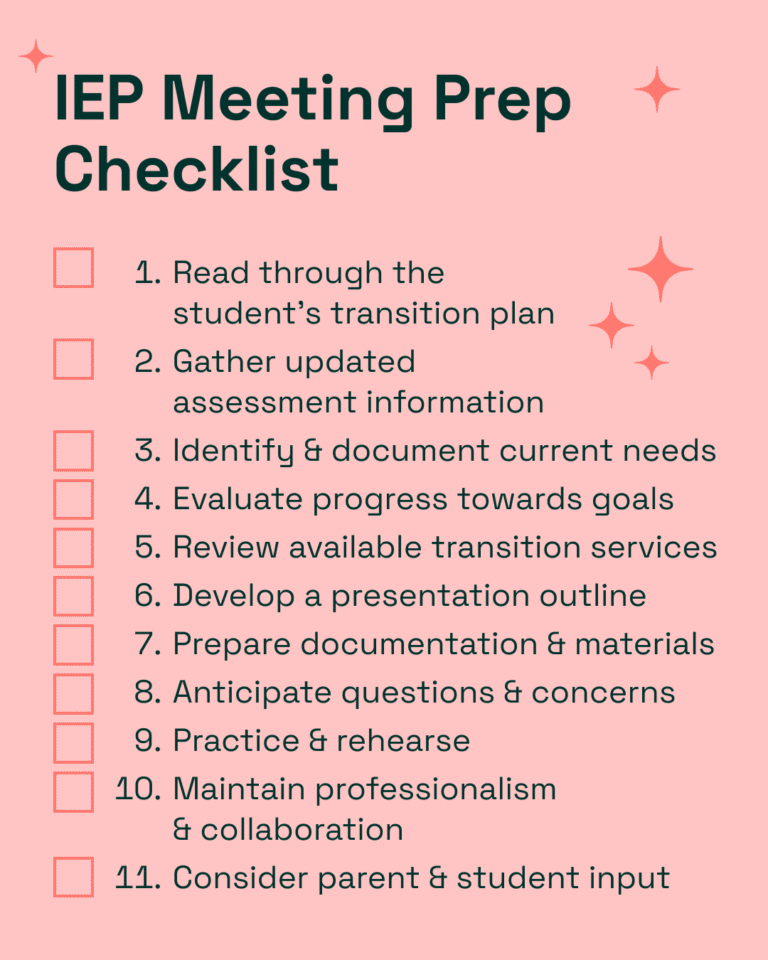
Preparing for a Transition IEP Meeting: 11 Important Tips


Creating a comprehensive Individualized Education Program (IEP) is among the most challenging, extensive, and detailed processes special educators will engage in over the lifespan of their career. It demands adherence to complex federal and state regulations and paying meticulous attention to detail to ensure that IEPs are accurate, legally compliant, and meaningful for the child.
An aspect of the IEP planning process which can often be overlooked is presenting it to stakeholders, which include the student’s parents/guardians, at an IEP meeting. Presenting a coherent and well-structured IEP is essential to gaining the approval and buy-in of parents. For transition plans in particular, parents will likely be anxious and looking for reassurance from educators that their child is on the right path to adulthood.
To ease the stress that this process entails, we have created a checklist which special educators can go through before presenting a student’s transition plan to a wider audience. This checklist aims to give structure to the preparation phase and ensure that all relevant information is presented.
See what Ori Learning’s Transition Curriculum can do for your school.
Explore essential tips to avoid the most common legal errors and stay compliant in when making a transition plan.


The meeting aims to ease parent anxiety by presenting a structured transition plan, ensuring all relevant information is communicated.
Presenting a coherent IEP is crucial for gaining parent approval and reassurance that their child is on the right path to adulthood.
Preparation involves reviewing documentation, gathering updated assessments, identifying current needs, evaluating goal progress, and reviewing transition services.
The steps provided above are designed to equip special educators with a structured approach for creating meaningful, personalized transition plans that comply with legal standards and support each student’s journey into adulthood. It is crucial to remember that the effectiveness of an IEP, especially a transition plan, relies not only on thorough preparation, but also on the collaborative effort among educators, parents, and the student which ensues after the IEP meeting. Transition planning is a continuous process of assessment, adaptation, and advocacy to ensure that every student has the skills, knowledge, and support necessary for future success.
With Ori Learning’s transition curriculum, your school or district can enjoy the peace of mind of having access to an easy-to-implement, comprehensive program that allows you to report on progress and demonstrate compliance. Find out how our curriculum can help you meet IEP goals safely and consistently by booking a call with one of our representatives today.

